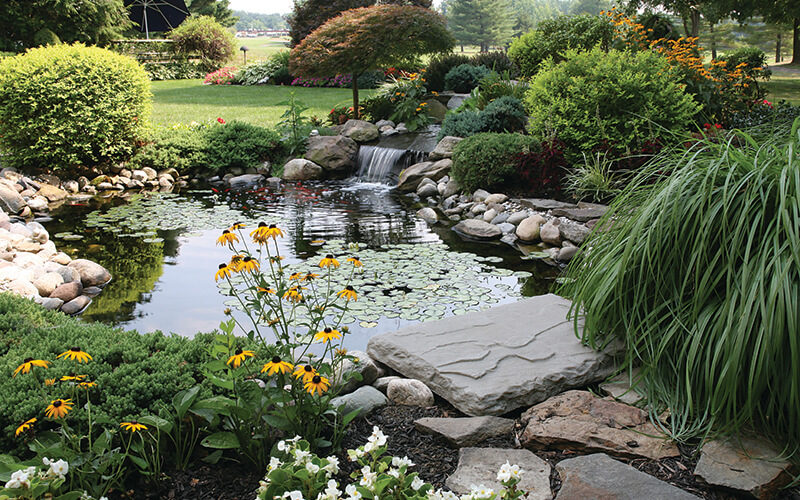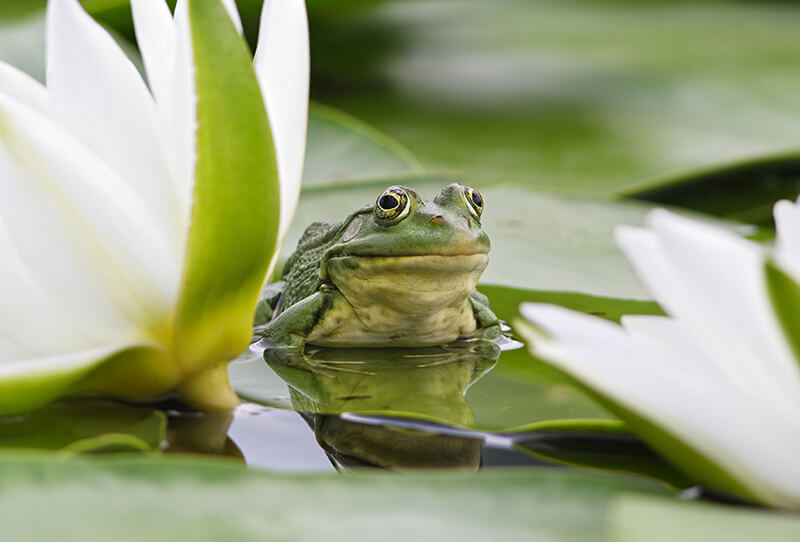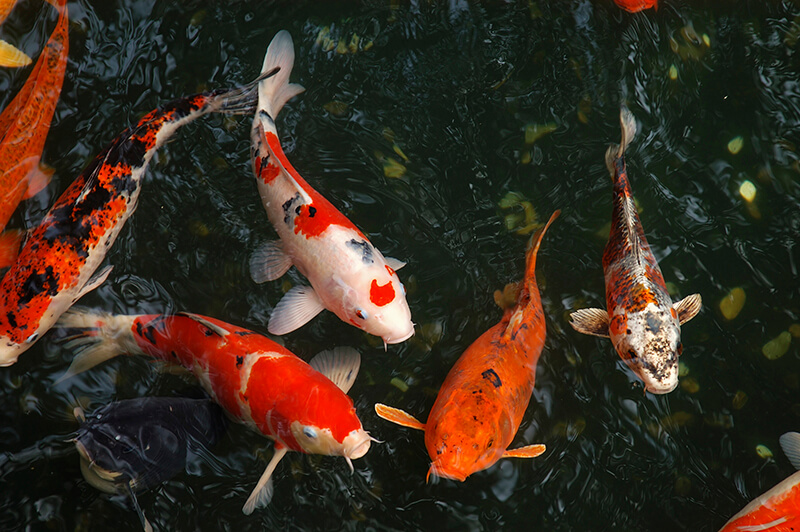Fall & Winter Steps for Closing Your Pond

Backyard Pond Winter Care
As we begin to approach the colder months of the year, you may want to consider getting a head start on closing your pond for the Fall & Winter.
We want to prepare you for properly protecting your pond from the harsh conditions that cold weather can bring. Following specific steps in the Fall will lighten the load of finally closing out your pond in the Winter time.
First Steps: Cleaning Out the Pond
First things first, your pond has probably gotten pretty dirty over the course of the year!
You want to make your fish comfortable in their own home, so cleaning out the pond before closing it is a must. Cleaning up fallen leaves and debris is the first matter to take care of in the backyard pond winter care process.
Luckily, we offer a selection of nets with handles to manually remove leaves from your pond! Use a handle net to scoop up the majority of the fallen leaves and debris from the surface and below. Sometimes, you may want to pump some water out of your pond to have an easier time gathering the debris. Pond vacuums and hoses can also assist in eradicating any leftover accumulation.
Falling leaves aren’t the only plant life that presents problems. Decaying aquatic plants such as water hyacinths and lilies can be damaging to fish health, so maintaining them for the Fall/Winter is ideal. Cut back hardy plants and completely remove any non-hardy ones. If you want to save any of them for next year, they can be transported indoors for safe-keeping away from frost.

Does Removing Leaves From Your Pond Before Winter Matter?
Decomposing leaves in the pond will cause the pond to become out of balance, which will cause fish heavy stress. This can lead to the death of fish over the winter if not remedied. We carry a product called Microbe Lift Autumn/Winter Prep for Ponds. This product is a bacteria that works in cold water temperatures to maintain the biological filter and help break down leaves and organic sediment.
When refilling your pond with more water, add a water conditioner to cleanse the pond of any chemicals and sediments. You want a fresh start for your fish!
Prepping Your Pond for Winter in the Fall:
For the Fall, laying a net over the pond is advised. Do this to keep falling leaves out and damaging the quality of the water. Suspend a net roughly a foot and a half above the surface of the pond to catch any falling leaves from the changing trees. You want to enclose the pond on all edges so that leaves also do not blow horizontally into the water.
Leaving a few small openings on the side is also advised, as it allows beneficial pond dwellers like frogs to come and go as they please. Naturally, you do not want any part of your net to fall directly into the water, as it could be a survival hazard for fish, should they happen to get stuck.
We carry 3 sizes of overhang nets in our home and Garden stores for customers to purchase:
7ft x 10ft, 14ft x 14ft, and 28ft x 28ft.

Feeding Your Pond Fish During the Winter Months:
We also have fish food formulated for colder water temperatures. Fish dramatically slow their metabolism during colder months, thus their diets must change with them.
We carry:
- Microbe Lift Cold Weather Food: 12oz, 2lb, 5lb, & 14Lb.
- Tetra Spring & Fall Food: 3lb & 1.72lb.

You want to start feeding your fish these products when the water temperature is consistently below 65 degrees Fahrenheit, as these foods are easier for fish to digest. Fish simply cannot digest food as well as the water temperature decreases. Once the water temperature is consistently below 50 degrees, we recommend to stop feeding fish entirely.
Backyard Pond Maintenance During The Winter Months:
As Winter approaches, you want to start the final pond closing steps. We recommend turning the waterfall off during the Winter, or when temperatures are below freezing. Fish go into a dormant state during the Winter, so they need very little oxygen from the water to survive.
An important thing to avoid during the winter is the pond freezing over. When this happens, a build up of gasses can occur in the water because they cannot escape the surface. Keeping a hole in the ice will help you avoid this issue entirely. We sell heaters to help maintain a hole in the ice so that these gases go on their way. They are thermostatically controlled to work only when necessary!

Final Steps to Closing Your Pond for the Winter: Equipment & More
In the last stages of closing out your pond for the Winter, you want to consider completely shutting down your equipment. Pumps, filters, and UV clarifiers all should be shut down if temperatures begin to dip below freezing, as the weather can be damaging to them, and thus, the fish.
We recommend that you take all equipment inside for the Winter for protection from the elements. Clean and inspect your equipment for any flaws, replacing any parts that they may need in the process. If you are storing your equipment in a garage or other area exposed to slightly colder temperatures than the rest of your house, always ensure that there is no water left inside the machine, as it can freeze inside and cause breakage if it expands.
Additional Information for Pond Winter Care:
Overall, we hope that you gained some helpful tips and tricks for closing out your pond for the Winter and protecting your fish! For further information, see our in-store specialists – We’re always happy to help. Have a safe and happy end of Fall & Winter!
Have more questions about closing your pond for winter time? Contact a garden expert today or click here to visit our Home & Garden Center pages for all of your Home & Garden needs!
